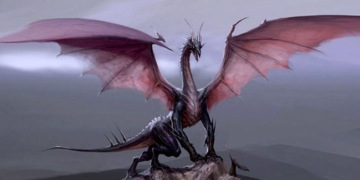New Research Reveals When Prehistoric Humans Began to Converse
Conducted by archaeologist Steven Mithen, the new research report indicates that humans developed language capabilities around 1.6 million years ago in the wilds of Southern Africa.
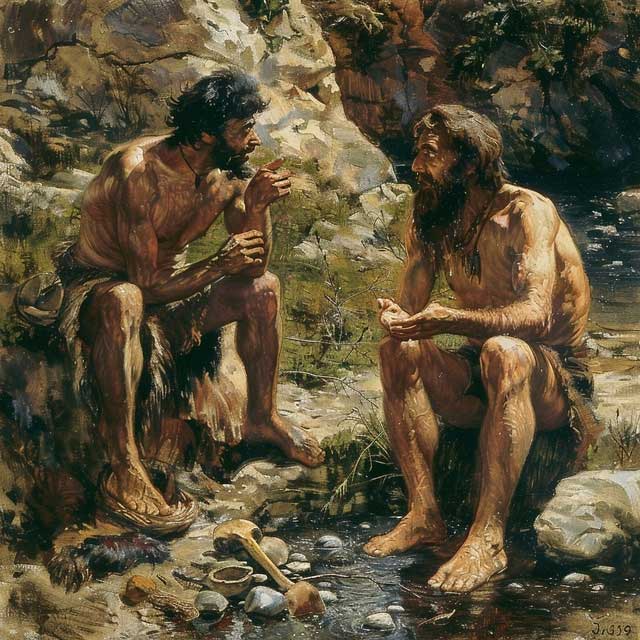
Ancient language emerged at least 8 times earlier. (Illustrative image).
“No one can doubt that humans have physically and culturally evolved thanks to the ability to speak. That is why determining when the first form of language emerged is so crucial,” stated Professor Mithen, a prehistoric expert at the University of Reading, in an interview with The Independent.
Previously, most experts believed that humans only began to speak around 200,000 years ago. However, in this new report, Professor Mithen argues that the early version of ancient language appeared at least 8 times earlier. He reached this conclusion based on evidence found at excavation sites, in genetics, ancient human anatomy, and various other linguistic evidence.
Combining these findings, he suggests that the inception of language occurred between 1.5 to 2 million years ago.
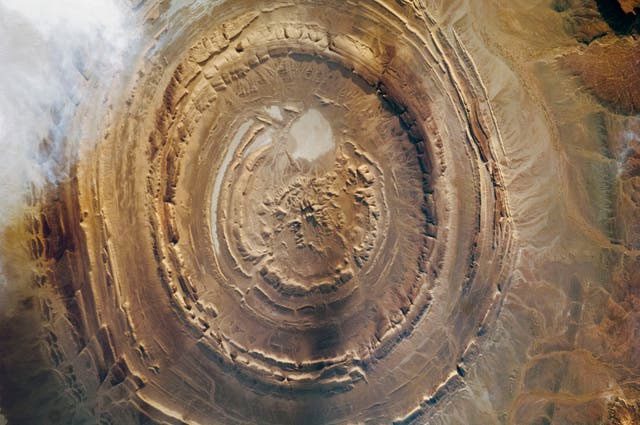
The Richat Structure in the Sahara Desert, believed to be the cultural center of prehistoric Homo Erectus – (Photo: NASA).
Another crucial factor is that the size of the human brain significantly increased, particularly from around 2 million years ago and accelerated rapidly after 1.5 million years ago. This increase in size was accompanied by a reorganization of the brain’s internal structure – including the first appearance of the frontal lobe, particularly linked to functions of thinking, imagination, and perception. This area contains a region known as “Broca,” which scientists believe is associated with language production and comprehension.
The new scientific study also shows that the emergence of the Broca area is related to improvements in memory retention – a crucial factor for sentence formation. However, other evolutionary developments were also essential for the birth of primitive language.
Two factors that accompanied humans at the dawn of evolution are bipedalism and changes in skull shape, which likely contributed to alterations in the shape and position of the respiratory tract, thereby enabling humans to develop vocalizations.
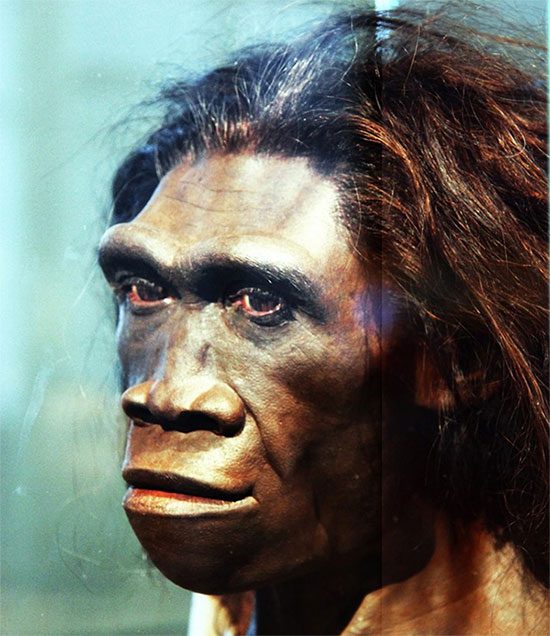
Homo erectus, thought to be the first human species capable of speech – (Photo: Internet).
Another critical piece of evidence appears around 1.6 million years ago (also when humans could have begun to speak) found at archaeological sites. Compared to contemporary species, humans were particularly vulnerable, indicating that our ancestors must have possessed a different “weapon” to gain an advantage.
During the evolutionary process, it is almost certain that language was part of a strategy to compensate for physical strength. To hunt large animals (or when foraging, to fend off stronger creatures), early humans needed to plan and coordinate better – the development of language was vital in this context.
Humans began hunting around 2 million years ago, and the efficiency of hunts significantly increased around 1.5 million years ago. Around 1.6 million years ago, fossil records show the emergence and transmission of culture across generations, with stone tools becoming much more effective. It is highly likely that spoken language helped prehistoric humans transfer complex knowledge and skills from one generation to the next.
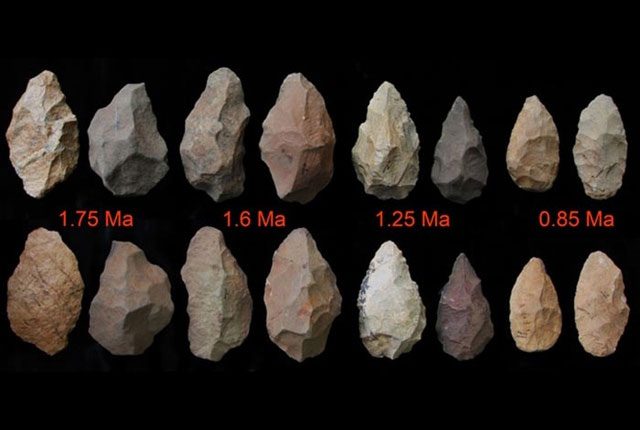
Advancements in human tool-making, from 1.75 million years ago to 850,000 years ago – (Photo: Los Alamos National Laboratory).
Moreover, language communication could have helped humans survive in different ecological and climatic regions – perhaps not coincidentally, humans significantly accelerated their global settlement around 1.4 million years ago, shortly after the time believed to be when language began. This tool enabled humans to achieve three critical things in shaping the future: envisioning to plan, and conveying knowledge.
“This is how language has profoundly changed human history,” according to Professor Mithen. His new research suggests that before language emerged, human communication was extremely limited, possibly consisting of just a few dozen sounds and gestures.
Over hundreds of thousands of years, language gradually evolved, becoming complex until it reached the sophisticated level we see today. In modern times, we not only use language to converse with each other but have also invented new languages, such as programming languages to communicate with computers.


















































